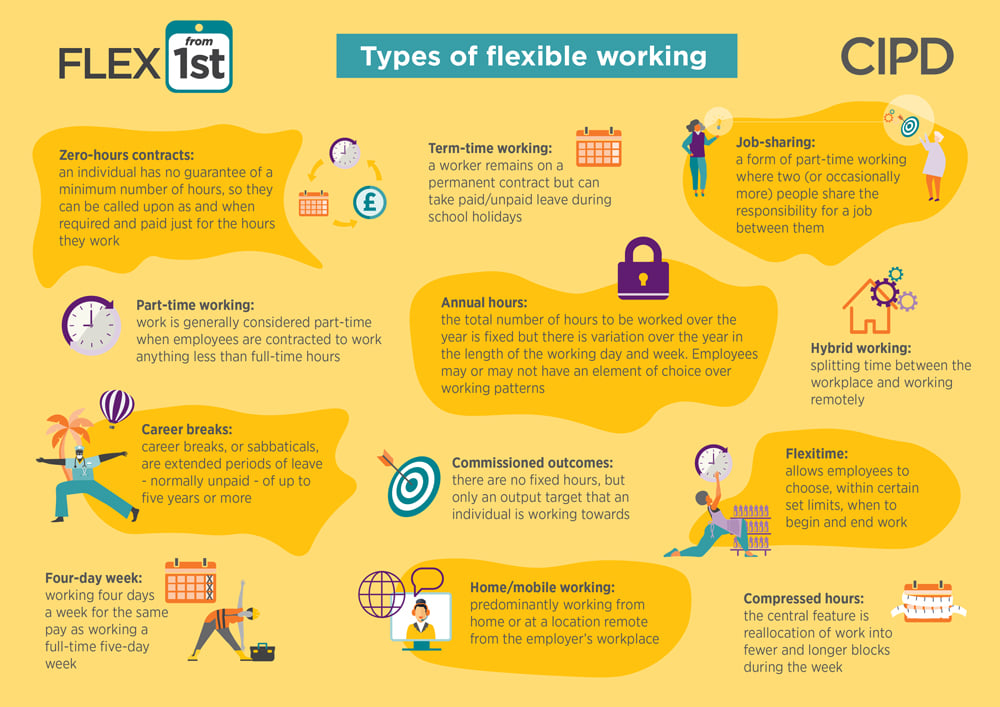Before the pandemic changed the world in 2020, flexible working and remote roles were not the norm. And ‘hybrid working’ wasn’t in our day-to-day vernacular.
There are still those who, despite mass evidence proving otherwise, don’t believe that those working from home are as productive as those who trudge into the office every day. This old school approach that presentee-ism indicates loyalty, efficiency, and dedication, has been proven just that. Old school.
As we’re all encouraged by various bodies to return to the office, no doubt because they are stakeholders in industry that depends on foot fall from commuters. But many of us who have a flexible arrangement simply don’t want to return to “before”. We’ve enjoyed having more time with our loved ones; being more present as parents, longer dog walks, more time for exercise, or even just longer in bed. And that’s not even talking about the money saved on commuting and fuel.
People Management even go as far as to attribute the ‘Great Resignation’ of 2021 down to employers refusing the newfound flexibility that was enjoyed during the various lockdowns.
That said, this is all conjecture. So, what’s really happening with businesses around the country? Let’s have a look.
Firstly, let’s clarify the differences between flexibility and hybrid working
Flexible working: this is an umbrella term that can related to hours, days, and locations.

Hybrid working: this refers to where employees work. This is balanced between being in the office and any other location. Typically, employees will have an arrangement with their place of work that takes the following into account:
- The split between working from the office and remotely.
- Set days for this split (e.g. Monday – Wednesday in the office, Thursday and Friday remotely) or fully flexible (arranged on the fly).
- This could also refer to working from multiple sites, as well as remotely.
Remote working refers to employees who don’t come into the office unless specified.
For the sake of clarity, we will refer to hybrid working throughout this article.
More than 8 in 10 workers who had to work from home during the coronavirus pandemic said they planned to hybrid work.
Since then, the proportion of workers hybrid working has risen from 13% in early February 2022 to 24% in May 2022. The percentage working exclusively from home has fallen from 22% to 14% in the same period.
Book a free demo
The only way to truly assess a new system is to see it in action. Why not book a free demo of our simple-to-use system, and take the opportunity to ask our consultants how the platform can configured to your exact business requirements?
Pre-pandemic hybrid working
There was once an attitude that only senior leadership teams and parents/carers would want or need a flexible hours or location. For anyone else, requests to work from home on days where employees had medical appointments or needed to wait for a plumber were often scoffed at.
Coming at this from a human angle, when else can these essential life admin tasks be done? So really, perhaps we need to stop viewing it as a benefit but a given. When all is said and done, we are all humans with needs.
Obviously the stay at home restrictions forced the hand to let pretty much everyone, bar some keyworkers (and anyone who was furloughed for more obvious reasons) work remotely for a time. This country-wide experiment proved it can be done. It also made many review their work-life balance.
Based on this newfound freedom of movement and choice, here’s an entire treasure trove of research from ONS on the matter:
As you can see, for the most part, the view of ‘mostly working from home, and sometimes usual place of work’ came top. Not only that, but between the initial survey in April 2021 and the follow up in February 2022, more expressed this desire. And the general trend seems to favour home over the workplace.
It also looked at those travelling to work in January 2021 (which was a national lockdown) up until April 2022 (a month after all restrictions were lifted). It found that those travelling to work remained consistent, those working from home only decreased over time, and those with a hybrid working arrangement continue to increase.
Who is most likely to hybrid work?
As previously mentioned, probably owing to old school views on trust, those who have hybrid or home/remote working arrangements increased with salary bracket. This can be assumed that the level of their seniority increases too.
It found:
- More than a third (38%) of workers earning £40,000 or more hybrid worked between 27 April and 8 May 2022, meaning they both worked from home and travelled to work in the latest week.
- Workers in this income group were the only ones for whom hybrid working was the most common working pattern. They were also more likely than other income groups to work from home exclusively.
Lower earners were less likely to report hybrid working. Lower earners who reported hybrid working between 27 April and 8 May 2022 included:
8% of those earning up to £15,000
24% of those earning between £15,000 and £20,000
21% of those earning between £20,000 and £30,000
32% of those earning between £30,000 and £40,000
They also looked at the common benefits of those working remotely, coming up top was the improvement to work life balance. Ultimately, we know that when our employees have happier home lives, they perform better, and tend to be happier at work, too. In fact, we have found that offering staff flexible or hybrid work arrangements not only attracts new talent, but retains it too.
“Firms that had adopted remote working before the pandemic were already benefiting from this decision. They’ve been able to withstand the challenges of the last year without major business interruptions and have access to a global and diverse talent pool that wasn’t accessible to firms that were strictly tied to in-office work culture.”
Flexible and hybrid working: a benefit or a shift in company culture?
Many will argue that remote and hybrid workers impede building a successful company culture. It is thought that the silos it can create can have a negative impact on relationships across teams, and departments. However, we think this is a lazy forecast.
Anecdotally, we don’t have to see our friends every day to maintain healthy relationships. And this rings true in the workplace. Just as we can successfully forge relationships with colleagues in different locations – and have done for many generations. We keep in touch in other ways, and it has become even easier to do this.
As for in person relationships? It is simple, plan ahead. Make time for gatherings. Invest in team building.
Ultimately the decision comes down to this: what is more important – happy, loyal teams who consistently produce high quality work. Or keeping a bunch of people in a building, come hell or high water because that’s “what you’ve always done”?
Summary
Hybrid working is here to stay. Organisations that have adapted to this way of working will ultimately reap the rewards of retaining their best talent and attracting high quality candidates to fill new roles.
Alongside hybrid working, a flexible employee benefits package can also work wonders for retention. FlexGenius customers, like RPC Tyche, have reported an 84% employee engagement rate since migrating their employee benefits platform to ours.
If you’d like to find out how we can help you drive better employee engagement and look after your talent, book in for a demo. Our digital benefits platform houses your benefits, rewards and recognition schemes, and allows you to communicate with your workforce too.



